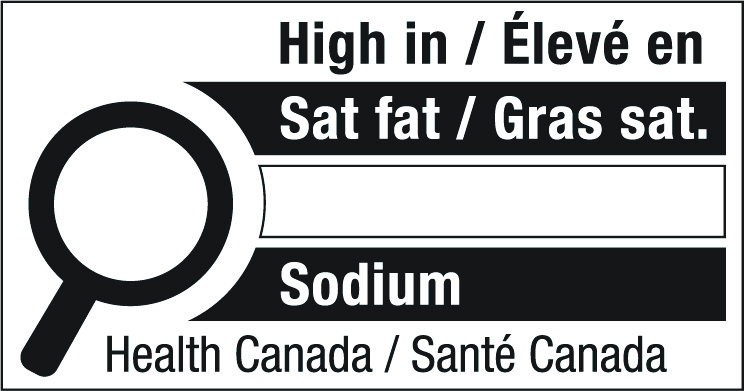
1. Number of warning labels
Products can have more than 1 warning label. In fact, there are 9 categories where we can expect 3 warning labels per product. And the higher the number of labels, the more consumer perception will change, which will likely not be in the manufacturers’ favor.
In Canada, 88% of consumers stated that 2 warning labels are already too many for them to consider purchasing a product. Our recent NIQ BASES survey confirms that the fewer warning labels on the product, the higher the chances the product sells and, consequently, the higher the profit.

2. Switching categories
When Mexico introduced warning labels in 2020, more than half the loss of sales was driven by consumers switching to products without warning labels. This happened across multiple categories, and we saw an 18% increase in consumer interaction with adjacent categories.
To avoid products with the warning label, consumers will likely either turn to a different category or purchase the same product less frequently. In fact, in Mexico, purchasing frequency for products with warning labels fell by as much as 10% across all households, regardless of income level.
We expect similar scenarios in Canada based on the following consumer responses:

Looking at your portfolio and knowing that consumers will recognize your brand in other spaces, do you have options with fewer warning labels in adjacent categories?
3. Positioning
In 2023, 57% of Canadian consumers stated that they trust health claims on food packages. If your brand is marketed as nourishing and nutritious, how will perceptions change after a warning label is included?
Consider these two taglines: “100% flavor and indulgence” and “Snack without guilt.” Which product do you think would perform better after including the warning label?

It’s important to evaluate how your brand’s positioning will translate in the post-warning-label environment. Do your statements align with consumer perceptions? If brand messaging appears misleading, consumers might lose trust.
4. Price
The warning label evokes implicit unhealthy associations, and consumers will expect the pricing to reflect this. Indeed, NIQ BASES research shows that the strongest strategies for maintaining unit sales levels are mostly pricing-related.
Promotions, offers, discounts, and similar can all help mitigate the off-putting effect the warning label produces.
By including the warning label, there’s less to differentiate between products. Nutritionally, they have the same value — or lack thereof. As such, consumers are naturally drawn to the more affordable options, and these items can capitalize on the missed sales of warning-label products with a higher price point.
5. Pack design
The warning label’s black-and-white, stark square doesn’t easily fit into the pack design. In fact, our neuroscience research uncovered that the immediate emotional reaction to the warning label was largely adverse. However, you can take steps to sidestep its impact.
For starters, keep the warning label away from the logo; the more space between them, the better. In the study mentioned above, some participants even experienced a positive emotional reaction when the warning label was far away from the logo.
In addition, amplify your brand’s messaging as much as possible; strong product or mascot imagery can draw consumer perception away from the warning label.
Looking ahead
2026 is closer than you think.
To ensure you’re prepared for these new regulations, it’s best to start planning sooner rather than later. When Mexico introduced its own warning label, many brands never returned to pre-regulation sales numbers. However, with a proactive approach, you can maintain sales and adapt the warning label within your market strategy instead of adapting to it.
NIQ BASES can help you along the journey; whether it’s pricing, pack design, promotions, etc., our solutions will shine a light into 2026 and prepare you for Canada’s warning label landscape.
Note: All datapoints mentioned are from a syndicated survey by NIQ BASES: Front of Pack Warning Label Syndicated Report

Take it a step further with our webinar
Learn even more about the upcoming front-of-pack warning label changes coming to Canada in 2026 with this in-depth exploration video and webinar hosted by NIQ BASES.




